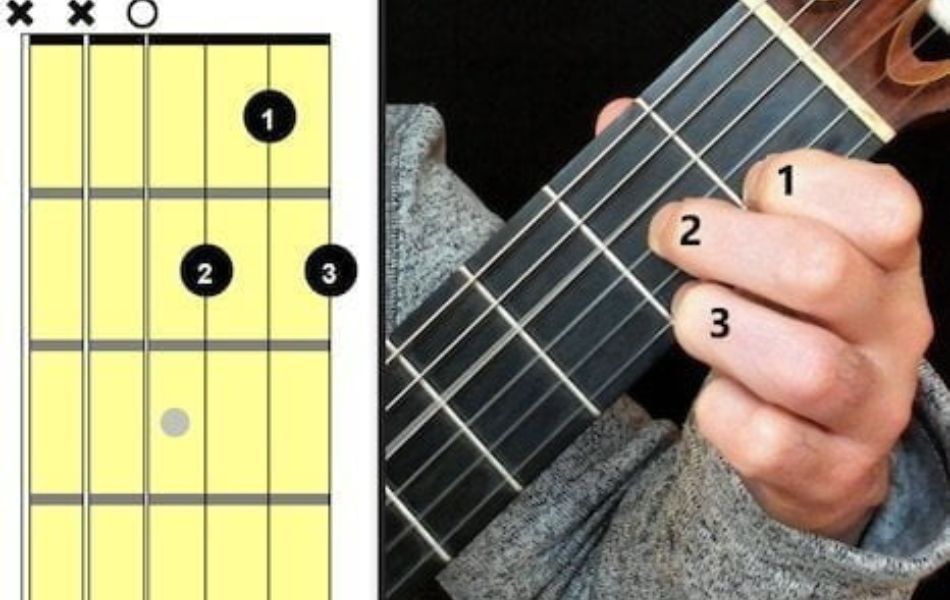In the world of guitar playing, understanding how to form chords is essential. One of the foundational chords that every guitarist should have in their repertoire is the D7 chord. However, achieving the right sound from this chord requires mastering D7 chord guitar finger position. In this guide, we’ll take you through the correct technique for playing the D7 chord on the guitar.
Contents
What is the D7 chord guitar for beginners?
Before understanding D7 chord guitar finger position, we discuss the D7 chord. The D7 chord is a simple chord that appears in various musical genres like country, slow rock, and folk music. Artists like Pearl Jam and Otis Reading incorporate it into their songs.
It adds a cheerful quality to your chord progression and injects a bit of lightness into more nostalgic-sounding tunes. It makes it a valuable addition to your guitar repertoire. Similar to many chords, it goes by different names, such as the “D dominant seventh chord,” D dom7, and D dominant 7.
Because it serves as the dominant chord in the key of G. (Distinct from the D diminished or Ddim chord.) It’s important to distinguish the D7 chord from the Dm7 chord.
While they share many of the same notes, the D7 chord replaces F with F#. Before we delve into actually playing the D7 chord, I recommend taking a look at this article I’ve written on chord diagrams so that you can easily follow this guide.

How to play the D7 chord
Open chord
Let’s explore the initial version, which is the open position variation – meaning one or more strings remain unfretted. Using the D7 chord diagram provided above, follow D7 chord guitar finger position:
- Place your index finger on the 1st fret of the B string.
- Position your middle finger on the 2nd fret of the G string.
- Put your ring finger on the 2nd fret of the high E string.
Now, strum down from the D string, excluding the low E and A strings. Voila! You’ve got it!
Variation of D7 guitar chord
If you’re looking to expand your chord repertoire or explore different sounds, here are a few other D7 chord variations to consider:
D7 Barre Chord
This version involves using a barre chord shape where you press down on all the strings with your index finger across a fret and create the D7 shape with your other fingers. This variation has many chords with different fret on the guitar. The most popular chord is D7 on fret 7. In addition, other frets are 5th fret, 10th fret.
D7sus4
A D7sus4 chord adds a suspended fourth note to the D7, creating a slightly different sound. To play it, place your index finger on the 1st fret of the high E string, middle finger on the 2nd fret of the G string, and ring finger on the 3rd fret of the B string.
D7/A Chord
This variation emphasizes the A bass note in the D7 chord. You’ll place your index finger on the 1st fret of the B string, middle finger on the 2nd fret of the G string, and ring finger on the 2nd fret of the high E string while letting the A string ring open.
D7/F# Chord
Here, the focus is on the F# bass note in the D7 chord. You’ll fret the 2nd fret of the low E string with your thumb (if you can reach it) or use the palm of your hand to lightly touch the low E string, muting it. Then, place your index finger on the 1st fret of the B string, middle finger on the 2nd fret of the G string, and ring finger on the 2nd fret of the high E string.

D7 chord guitar finger position
A common stumbling block for many aspiring guitar players lies in a similar predicament – often, their middle finger ends up muting the G string, diminishing the chord’s clarity. While this may not spell disaster, it certainly deprives the sound of its potential crispness.
Here are a few pointers to help ensure that your chords ring out clear and sharp:
- Finger Positioning: Pay attention to the placement of your fingers. Proper positioning, with your fingers snugly behind the frets, guarantees the best possible sound.
- Relaxed Hand: Allow your hand to rest naturally on the fretboard, and make an effort to release any tension or stiffness.
- Arched Fingers: Gently arch your fingers to prevent unintentionally pressing down on neighboring strings.
- Appropriate Pressure: Apply just enough pressure to avoid any buzzing or muted notes.
These tips can be applied to mastering all guitar chords. As you learn more chords, you’ll naturally become more adept at perfecting your finger placement. So keep practicing, and soon your chords will resonate with clarity and precision!
By perfecting your D7 chord guitar finger position, you’re not just learning a single chord; you’re acquiring a fundamental skill that will open doors to a vast array of songs and musical possibilities. As you continue your guitar journey, remember that practice makes perfect. The more you work on your finger placement, the smoother and more confident your chord transitions will become.
